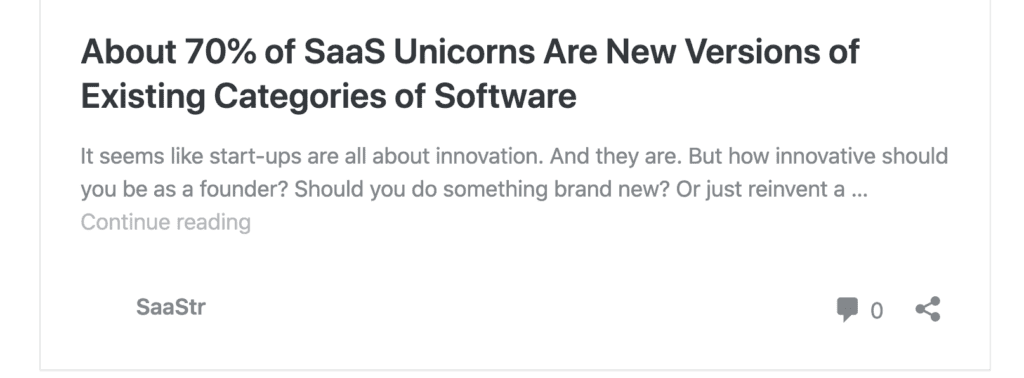If your TAM really does seem too small for VCs, 2 choices really:
1. Just find that 1 VC that still believes
This can work
2. At least build a 1.0 of a product expansion that shows a larger TAM
This often also works. Even if you have just a few customers to start.
— Jason ✨Be Kind✨ Lemkin (@jasonlk) October 2, 2023
TAM (Total Addressable Market) is a tricky concept. On the one hand, to build a decacorn or a unicorn, you need to tap into a large market. TAM matters, and if you aren’t playing in a $20B-$50B+ market … it’s hard to get to $1Bin ARR. In the end, this is why 70% of leading SaaS companies are really just new entrants in old, large markets:
On the other hand, most startups don’t enter a very crowded part of a market, or they redefine a market. Because the large parts of large markets are already pretty crowded. Or they see a space that is small today getting a lot bigger as it gets SaaS-ified or Cloud-ified.
For example, Okta today is a $30B+ cloud leader. But it’s much larger in ARR than all its pre-Cloud vendors in its space combined.
Still, many VCs just didn’t get it at first, as CEO Todd McKinnon noted. Which frustrates him almost to this day:
And VCs need to hunt unicorns and decacorns to survive. More on why that’s true here. So they are looking for large TAMs. Very large TAMs. Often, $100b+ TAMs.
So what do you do to get VCs excited if you see a $100m+ ARR / $1b+ unicorn in a space, but the nominal TAM just isn’t that big today? A few thoughts, which can be combined:
- Build a clear model to $100m ARR, ideally $300m ARR, with the traction and product you do have. Prove that with a bit higher ACVs, and a lot higher market penetration, you can easily get to $100m ARR and beyond. That will help. More on that here. And also be clear why competitors that never scaled to $100m ARR and beyond just … weren’t thinking big enough.
- Show at least a few early proof points on how you can grow your TAM — not just slides. There are two that tend to work well in many cases. The first is often adding a team edition, and/or enterprise edition. With multiple users per account, the deal size here is often 10x-30x larger than before. A bit more on that math here. The second proof point is launching a product expansion for real. Into another segment, or another category. Just slides often aren’t enough. But if you can show even tiny traction in the early days into a larger TAM through a large product suite, that can be more than enough to convince VCs. And you need to launch these expansions, not just show mock-ups or talk about them. Even if usage is low initially, launching the features into production proves you have an agile-enough team to grow your TAM.
- Show how every customer in a large market can really use your product. If you get 10% market share in a large market, at a decent per seat price, that’s $100m ARR there. Even if today, they don’t buy a ton of that category of software … yet.
- Talk to even more VCs than you planned. The murkier your TAM is, the harder it is to raise VC financing. But if your early traction and model are strong, and you do have some early proof points that your TAM can be bigger … eventually someone may believe. So just plan on talking to even more VCs than you’d anticipated. And it taking longer. Don’t get too discouraged. And follow up with more traction in proof points over several months. Showing more traction over time than expected is the best counterargument to anyone that claims your TAM is too small.
By the time you get to Series B and beyond, you need more than a clear model and an early edition or product launch. But these can often be enough in the Seed and Series A days to convince investors to go on the unicorn journey with you. Even if your TAM isn’t quite huge today.
I’ve lived this myself. A bit more of a deep dive here:


